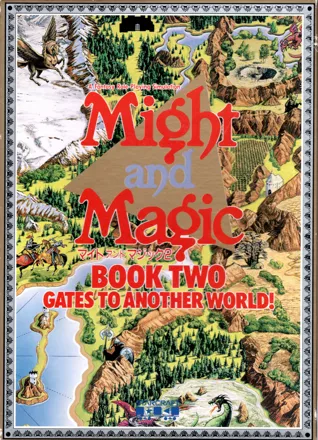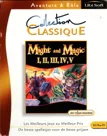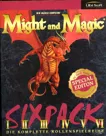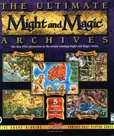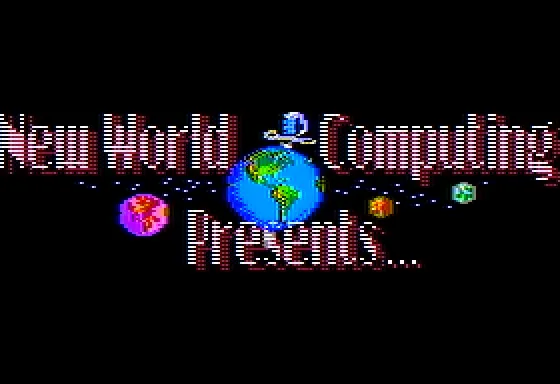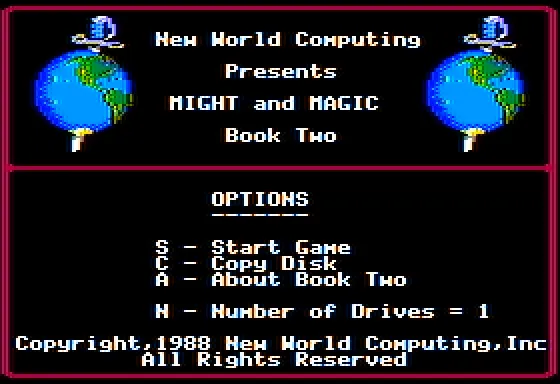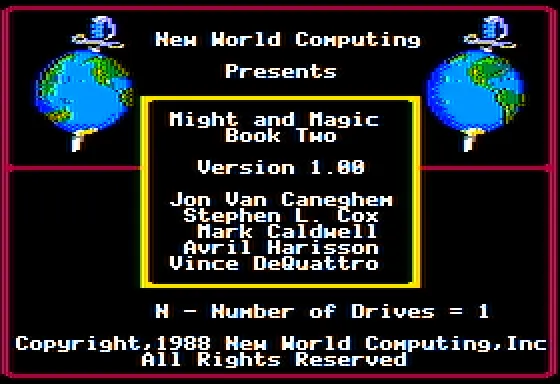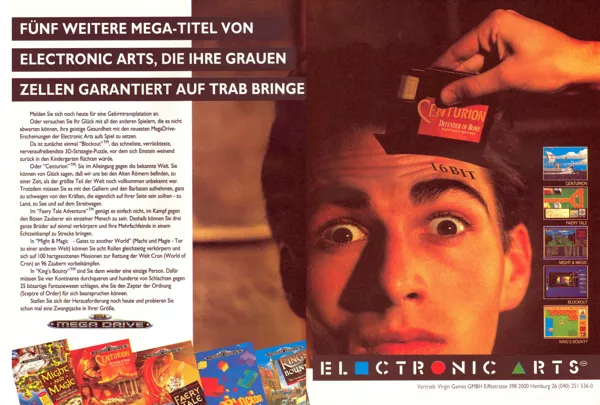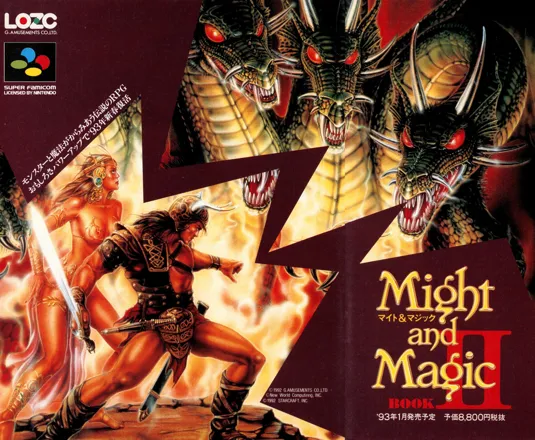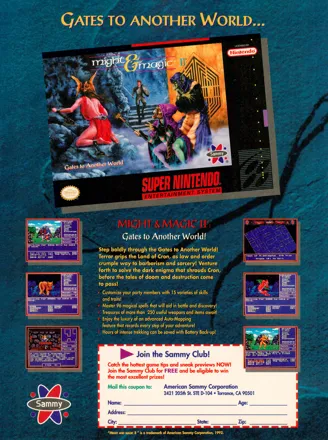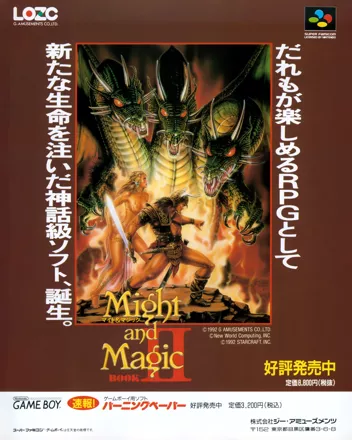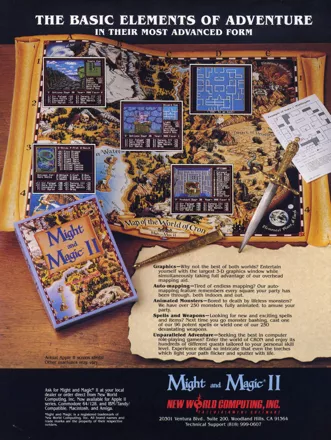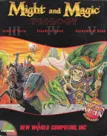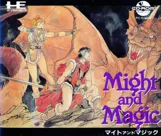Might and Magic II: Gates to Another World
Description official descriptions
The space traveler and rogue guardian Sheltem has left the world VARN, where he was pursued by the relentless Corak the Mysterious and a party of local adventurers helping him. The Gates to Another World eventually takes all of them to another world, known as CRON. There, a great turmoil is caused by Sheltem's actions, and the heroes must stop his madness, preventing him from casting the planet into its own sun.
Gates to Another World is the second installment in the Might and Magic series, and a sequel to Secret of the Inner Sanctum. Core gameplay is similar to predecessor, with the player creating a party of six characters and exploring vast first-person 3D environments, while fighting enemies in turn-based combat and leveling up. Unlike the first game, enemy encounters occur at set points rather than spawning randomly, though enemy type selection is still random.
Like in the previous game, character classes rely each on a particular attribute to be effective. Knight, Paladin, Archer, Cleric, Sorcerer and Robber return, with the addition of two new classes, Ninja and Barbarian. Race selection features humans, elves, dwarves, gnomes, and half-orcs. There are several locations and items that are restricted to certain genders, alignments, or races. A new feature is the possibility to hire two non-player characters to travel with the party and participate in battles. A new skill system is introduced as well, allowing characters to learn such abilities as mountaineering (necessary to traverse mountains), linguist (for reading certain messages), cartographer (for creating an auto-map), and others.
Compared to the first game, the sequel is more quest-oriented, with various characters in towns giving quests to the party, as opposed to purely exploration-based traveling in the predecessor. Time also plays a large role in this game, with some instances requiring the party to travel to different time periods. Characters also age as the game goes on; If the player waits too long, the characters' statistics will change to reflect their aging, and they will eventually die.
Spellings
- 魔法門 II - Traditional Chinese spelling
Groups +
- Console Generation Exclusives: SEGA Genesis
- Fantasy creatures: Dragons
- Fantasy creatures: Dwarves
- Fantasy creatures: Elves
- Fantasy creatures: Gnomes
- Fantasy creatures: Goblins
- Fantasy creatures: Griffins
- Fantasy creatures: Minotaurs
- Fantasy creatures: Orcs
- Fantasy creatures: Trolls
- Gameplay feature: Importable characters
- Might and Magic series
- Might and Magic universe
- Protagonist: Female (option)
Screenshots
Promos
Credits (DOS version)
17 People · View all
| Designed by | |
| Created by | |
| Original Apple II Version | |
| IBM Version | |
| Computer Graphics by | |
| Music | |
| Sound | |
| Manual Illustrations | |
| Map Illustration | |
| Art Coordinator | |
| Manual | |
| Adventurer's Guide written by |
|
| Corak's Travelogue written by | |
| [ full credits ] | |
Reviews
Critics
Average score: 73% (based on 35 ratings)
Players
Average score: 3.7 out of 5 (based on 81 ratings with 5 reviews)
The Good
It has some of the cool "Might And Magic" atmosphere.
The Bad
The game mostly consists of lots and lots of combat and running around trying to find items needed for quests.
The last few quests are extremely tedious and time-consuming, and require the player to fight extremely hard monsters. But just wait until the final dungeon: it's monotonous beyond belief. Really. I couldn't complete it without cheating and editing the stats of my characters. 'I don't see how anyone can finish it without extra help.
And the ending was the worst of all. After spending 2-3 hours fighting an endless stream of monsters in the final dungeon, the reward left me feeling like I wasted my time playing the game.
I heard Might And Magic III has a better finale, and I want to see it, but right now I'm turned off by Might And Magic.
The Bottom Line
Only play it if you want to finish all the Might And Magic games.
DOS · by Edward Alie (2) · 2006
Roleplaying - with aid from your imagination
The Good
There are five towns, a couple of castles with dungeons that might reach as far as two floors down, a wide expense of wilderness to explore and hundreds of monsters to fight.
The game came with a over 100-page manual which contained maps of the dungeons, which was useful considering how complex and maze-like they were. The towns were as RPG towns are like - there would be a place for buying and selling, inns for resting, temples for curing, training grounds for leveling up and town portals.
There are lots of quests to do and puzzles to solve. Players will also enjoy many in-game jokes and parodies of real life popular culture.
The Bad
The story became a little strange and off-key in the end. It was unexpected and was just too weird as a sword-and-sorcery world suddenly turns sci-fi.
Character graphics are not always present, sometimes a text just pops up on the screen and someone's there talking to you. Yet, there's just no graphic there to show that there is.
Background music gets repetitive at times, and at times vanishes so that one is walking around in eerie silence. Town environments are hopelessly boring, consisting of grey brick walls all around. It's like you are walking in a maze, not in a town.
The Bottom Line
Old school roleplaying game attempting a 3-D environment. You still fight 2-D monsters that randomly pop up while you are exploring dungeons or the wilderness. It's huge and will take the player many hours to complete. There are five towns, a couple of castles with dungeons that might reach as far as two floors down, a wide expense of wilderness to explore and hundreds of monsters to fight.
Genesis · by BeaconBlue (15) · 2006
An outstanding RPG... will keep you playing for hours on end.
The Good
This game has one of the most non-linear storylines around -- great for an RPG. You are free to wander the world, cities, dungeons, caves, and elemental planes... solving minor quests as you gradually learn more about the main plot. Character development is stunning, magic is handled well, there are scores of interesting items and weapons, and there are a host of NPC hirelings who you can have journey with your party.
Characters have an assortment of skills available. Some assist just the character, while others benefit the entire party. Auto-mapping is a skill that can be learned; if you like this feature, have a character learn the Cartography skill. If you don't, then don't. Normally I'm not a huge fan, but it's worth having maps in this game. Trust me.
I also like that your characters can gain levels to their hearts' content. The maximum level is 255, created only by the programming limitations of the day. You can still train and add hit points over level 255, but 255 is the maximum that can be displayed.
The Bad
A few things. First, the sounds leave much to be desired (particularly the tune that plays after you kill a monster in combat -- it quickly gets old). Thankfully, they can be turned off.
Another gripe I have is that you can only save your game at an Inn in one of the cities. While not unusual for games of the time, it makes it frustrating to make one wrong move deep in a dungeon, and have to then restore your game and begin the entire dungeon again.
And finally, the puzzle at the end is needlessly confusing. I won't say too much about it, but I solved it and I could not figure out exactly how to type in my solution. Add to this a real-time "countdown", and I was quite despondent (especially since the final puzzle requires you to hack 'n slash your way through a particularly nasty dungeon to get to it).
The Bottom Line
Great overall. The interface will take a bit of getting used to, but I guarantee it will be worthwhile. There are enough cities, castles, dungeons, quests, and items to keep you playing for a long time.
DOS · by Mirrorshades2k (274) · 2001
Discussion
| Subject | By | Date |
|---|---|---|
| Super Famicom version | Rik Hideto (473286) | Aug 4, 2015 |
| Copying Might and Magic II | mczolton (2) | May 30, 2007 |
Trivia
Cancelled US SNES release
There were plans to release the Super Nintendo version in the US, but it never came to fruition. However, the SNES version was released in other regions.
Hirelings
Hireling ages are calculated in an interesting way. If a hireling is at level one, then they will be 18, but if their level is higher, then one is subtracted from their level number and then added to 18.
References
- The two Wizards the sorceror class has to free in order to complete the plus quest are Yekop and Ybmug--or Pokey and Gumby spelled backwards.
- HK Phooey, a ninja hireling in the game, is named after a cartoon series about a dog who works as a janitor in a police station. The dog moonlights as a ninja by the name of "Hong Kong Phooey".
- Thund R--a barbarian hireling--gets his name from a cartoon called Thundarr the Barbarian.
- There are some woodsmen who challenge you to a tree felling contest. The song they are singing is, "Oh, I'm a lumberjack...". this is in reference to the Monty Python song.
- In Tundara, the portal in the Inn is manned by a guy named Jean-Luc. Star Trek: The Next Generation fans will know him as the captain of the Enterprise from that series. He also offers to "energize" you to your destination, and ends with the captain's line from the series---"Make it so".
- In the Druid's cavern is a location that has cans of spinach. If you eat it, you gain strength. The game also provides a line "You're strong to the finish 'cause you ate your spinach!" that comes from the old AARP cartoon series Popeye the Sailor Man. For those who don't know, Popeye gained strength to defeat his adversaries by eating spinach from a can that he always seemed to either find or have on him.
- In the slums of Sansobar, there is a message on a wall that, when read straight across, begins "Beware of eyes!" It seems to be surrounded by random letters. However, if you read these letters from the top down, you get the following messages: "Hi, Mom" "Spork" "XOXO" and "Slum rat Rule".
- Another hireling is named Jed I. This is, of course, taken from Star Wars' Jedi Knights.
- There is a sorceress by the name of Aeriel who is with Thund R. when you first meet them in Vulcania. As with Thund R., Ariel is the name of a character from Thundarr the Barbarian who was also a sorceress. It's also interesting to note that both these hirelings are human and good, which corresponds to their alter egos in the cartoon series.
- Nakazawa, a ninja hireling, is named after Nakazawa Minoru, president of StarCraft Inc. StarCraft ported MM1 to MM5 (DOS) and King's Bounty to Japanese-made PCs (PC88, PC98, X1, FM-7, MSX2) and published them in Japan.
SNES version
All alcoholic beverages were renamed to non-alcoholic ones (but still give alcohol poisoning), some other places and food were renamed as well and the enemy sprites of the thief (blood on dagger removed) and ghoul (the severed arm used as weapon replaced with a club) were changed.
Awards
- Computer Gaming World
- November 1996 (15th anniversary issue) – #12 Least Rewarding Ending of All Time
Analytics
Related Sites +
-
Commodore 64 Boxed Sets
For C64: game packaging digitalisations. Include box, manual, brochure, additional material. -
DOSBox Wiki
The encyclopaedic page of the DOSBox project. -
DOSBox, an x86 emulator with DOS
Compatibility statistics page between DOSBox versions and the original game. -
Hall of Light
For Amiga: game database entry; digitalised manuals; game packaging; screenshots; additional material. -
Lemon 64
For Commodore 64: game entry database; advertisement; magazine reviews; music; documentation; cover art; additional material. -
Lemon Amiga
For Amiga: game database entry; magazine reviews; music; manual; additional material. -
MSX Generation
For MSX: game database entry; game packaging; manuals; additional material. -
Macintosh Garden, an abandonware games archive
For Macintosh: reviews; game packaging; downloadable releases; manual; screenshots; additional material. -
Museum of Computer Adventure Game History (C64)
For Commodore 64: game packaging; manuals; media; additional material. -
Museum of Computer Adventure Game History (Electronic Arts, Genesis)
For Sega Genesis: game packaging; manuals; media; additional material. -
Museum of Computer Adventure Game History (Starcraft, SNES)
In Japanese. For Super Famicom: game packaging; manuals; media; additional material. -
Museum of Computer Adventure Game History (Starcraft, Sharp X68000)
In Japanese. For Sharp X68000: game packaging; manuals; media; additional material. -
Shrine at RPGClassics
Fansite with detailed information, maps and a walkthrough (English)
Identifiers +
Contribute
Are you familiar with this game? Help document and preserve this entry in video game history! If your contribution is approved, you will earn points and be credited as a contributor.
Contributors to this Entry
Game added by Old man gamer.
Commodore 64 added by Quapil. Genesis added by PCGamer77. SNES added by Mobygamesisreanimated. FM-7, MSX, Apple II, Macintosh, Amiga, PC-88, Sharp X68000 added by Terok Nor. PC-98, Sharp X1 added by Unicorn Lynx.
Additional contributors: MAT, PCGamer77, OceansDaughter, Alaka, Silverblade, formercontrib, Paulus18950, Trypticon, Patrick Bregger, ZeTomes, Motofumi Oka.
Game added June 17, 2000. Last modified February 22, 2025.


